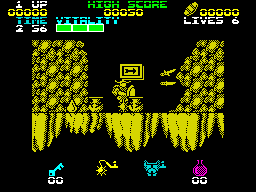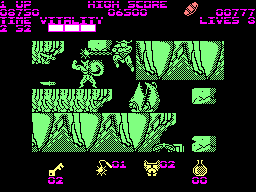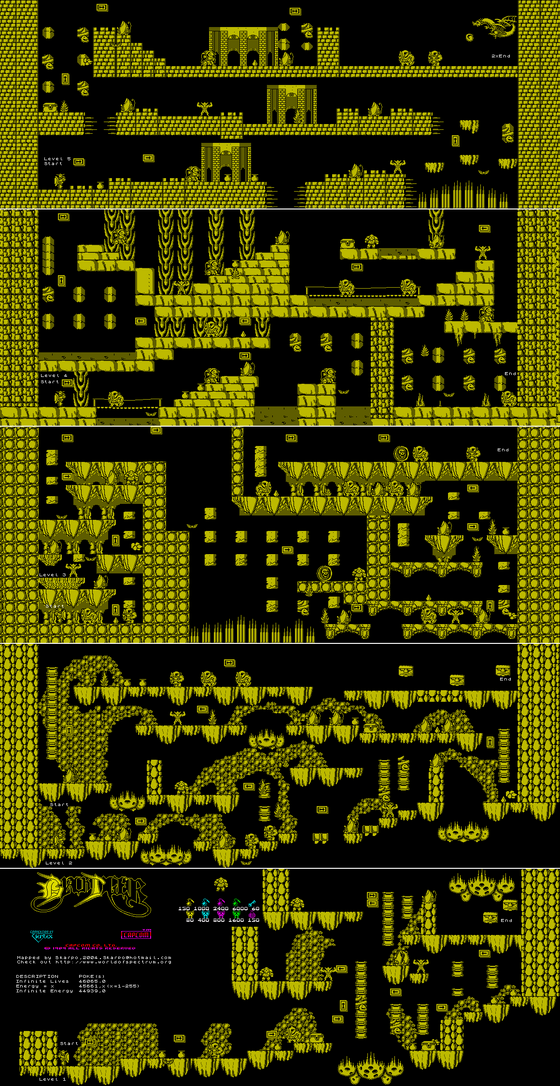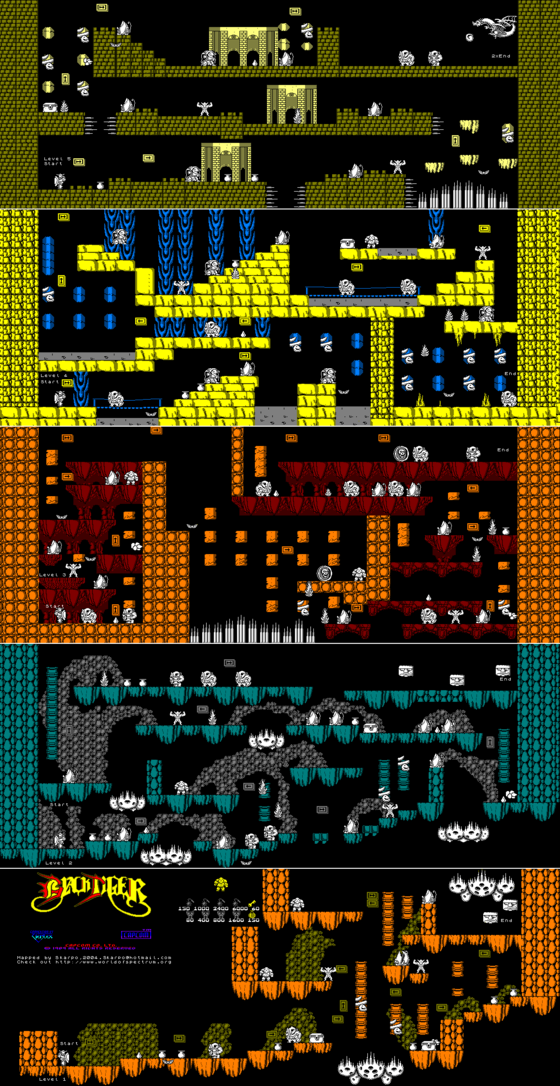Black Tiger CPC-Spectrum Comparison
Black Tiger is quite infamous for being one of the laziest speccy port.
And even more infamous because the speccy's original version is not even that good to begin with.
- Graphics : the Amstrad version use unmodified Graphical Datas.
The Sprites and tiles are stored in RAM in 1bit per pixel, sprites are also masked in 1 bit per pixel. the 1bpp datas are then turned into Mode1 2bit per pixel when they are to be displayed into the Video RAM area. Which is somewhat CPU intensive.
- Also some Raster interrupt are used in order to get more than 4 colours displayed on the screen.
But the main problem is that it is quite useless as the Game's window is still monocolour ! So it simply wastes CPU power.
Screenshots
- ZX Spectrum
- Amstrad CPC
What If ?
- What we quite got :
- What we could at least have :
- As the sprites are 1bpp + 1bpp mask , this means that if properly recoded in 2bpp they use the exact same amount of DATA in RAM, but could then be in 3 colours, 4th colour being used as mask, s used in super wonderboy (this is not shown on mock up)
- Also it may be possible to apply some king of "attribute colour" on the tiles so the Background and Foreground tiles, while still being 1bpp/2 colours...you may be able to set the ink (other than black) into one of the 3 other inks (from the Mode1 palette) as shown on the Map Mockup.
- Then get rid of Rasters interrupts/palette change to gain some CPU or even the few RAM needed by such routine..
There, you have a better version than the speccy one.
Pure lazyness ?
It is to notice that the Disk version actually use multiloads...
As it seems to reload datas between each levels...
So the Amstrad version is just some pure applied Lazyness and Scroodgery.
Such a shame for what used to be one of the best Arcade Game of 1987.



